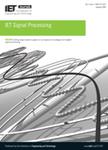版权所有:内蒙古大学图书馆 技术提供:维普资讯• 智图
内蒙古自治区呼和浩特市赛罕区大学西街235号 邮编: 010021

作者机构:Natl Cent Univ Dept Comp Sci & Informat Engn Taoyuan Taiwan Natl Taiwan Ocean Univ Dept Elect Engn Keelung Taiwan Landseed Hosp Dept Rehabil Taoyuan Taiwan
出 版 物:《IET SIGNAL PROCESSING》 (IET Signal Proc.)
年 卷 期:2017年第11卷第7期
页 面:884-891页
核心收录:
基 金:LSH-NCU Joint Research Foundation [102-LSH-102-A-018]
主 题:emotion recognition fuzzy set theory music particle swarm optimisation neural nets music emotion recognition PSO fuzzy hyper rectangular composite neural networks emotional content particle swarm optimisation PFHRCNNs particle swarm optimisation based fuzzy hyper-rectangular composite neural networks computational intelligence tools fuzzy membership estimation confidence factor
摘 要:This study proposed a novel system for recognising emotional content in music, and the proposed system is based on particle swarm optimisation (PSO)-based fuzzy hyper-rectangular composite neural networks (PFHRCNNs), which integrates three computational intelligence tools, i.e. hyper-rectangular composite neural networks (HRCNNs), fuzzy systems, and PSO. PFHRCNN is flexible to the complex data due to the fuzzy membership estimation, and an optimisation of the parameters is provided by PSO. First, raw features are extracted from each music clips. After feature extraction, a HRCNN is separately constructed for each class. Each trained HRCNN will result in a set of crisp rules. A problem associated with these generated crisp rules is that some of them are ineffective;therefore, a crisp rule is transformed into a fuzzy rule incorporated with a confidence factor. Next, PSO is adopted to simultaneously trim the rules, search a set of good confidence factors, and fine-tune the locations of the selected hyper-rectangles to increase their effectiveness. Finally, a PFHRCNN consisted of a set of fuzzy rules can be generated to recognise the emotion state of music. The experimental result shows that the proposed system has a good performance.